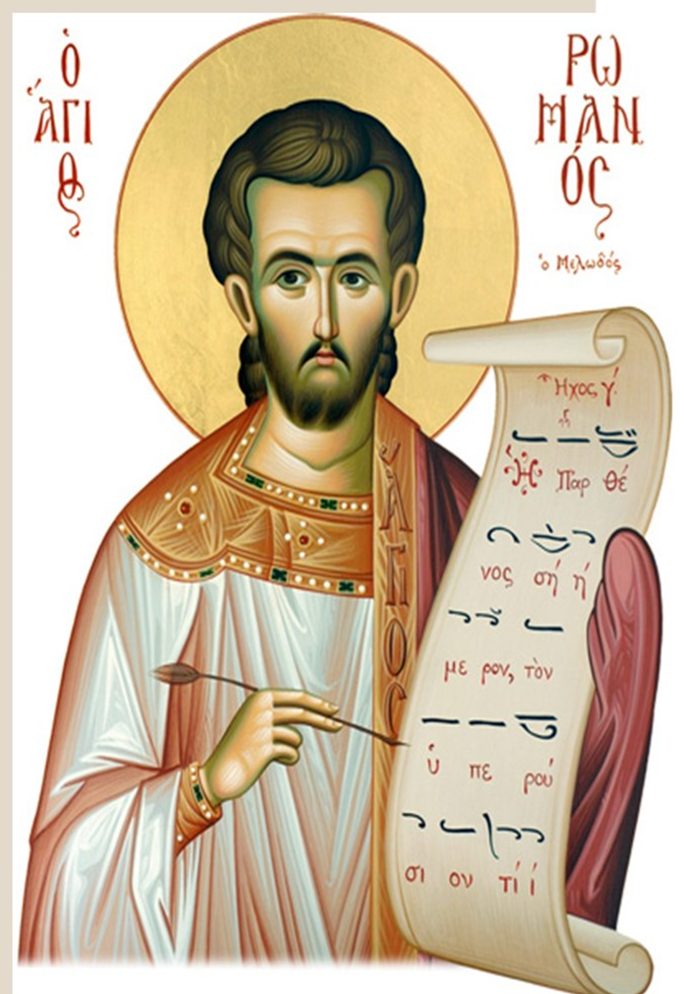KONTAKION

A KONTAKION ( also kondakion, kondak, and kontak; plural kontakia, kondakia) is a poetic form fequently encountered in Byzantine hymnograply. It was probably based in Syriac hymnographical traditions. We ccan perhaps best describe it as a "sermon in verse accompanied by music". The kontakia were so long that the text was rolled up on a pole for use in the services -- the genesis of the name kontakion, which means " from the pole" in Greek. In current practice, the kontakion has been greatly abberviated. Only the (first) proemium (preliminary stanzas) and first strophe are sung or read after the sixth ode of the canon at Orthros. The proemium alone is sung at the Divine Liturgy, following the troparia (a short hymn of one stanza, or one of a series of stanzas), and most other services of the daily cycle. The kontakion is not sung at Vespers. According to tradition, Saint Roman the Melodist wrote the first kontakion, the Kontakion for the Birth of Our Lord, by divine inspiration. Legend aside, Roman established the kontakion in the form it retained for centuries, and he is the most famous composer of kontakia.
KONDAK
KONDAK ou KONDAKION (pl. KONDKIA) (n.m.): une forme poétique fréquemment rencontrée dans l'hymnographie byzantine, probablement fondée sur les traditions hymnographiquessyriaques. Nous pouvons peut-être mieux le décrire comme un «sermon en vers accompagné de musique». À l'origine, première forme accomplie de composition poétique liturgique de l'ancienne Byzance, créée par saint Romain le Mélode (VIᵉ siècle). Le kondakion est le dernier d'une sière de tropaires (petite composition liturgique qui résume la signification historique de la Fête du jour; il est chanté dans l'un des tons indiqués). À l'origine, un kondakion consistait en plusieurs versets. Aujourd'hui, seul le troparion majeur d'un kondakion est encore chanté, à la seule exception de l'Hymne Akathiste (ORTHOFLASH, le 30 mars 2017), qui est toujours chantée dans son intégralité. Selon la Tradition, le Kondakion pour la Nativité de Notre Seigneur, par inspiration divine. Mise à part la légende, saint Romain a établi le kontakion sous la forme qu'il conserve, depuis des siècles; il est le compositeur le plus célèbre des kontakia.